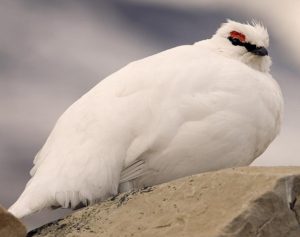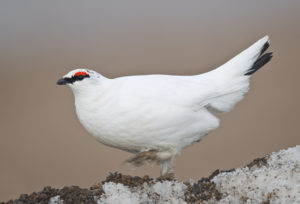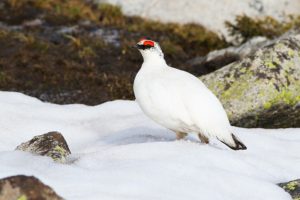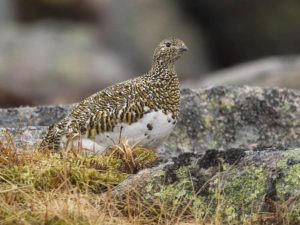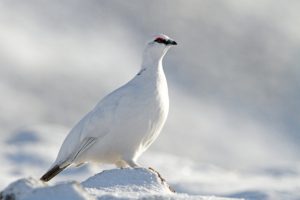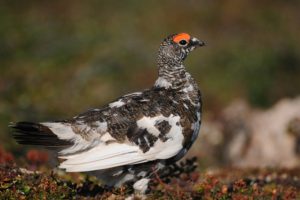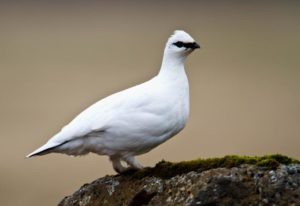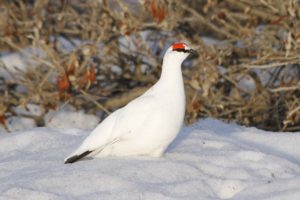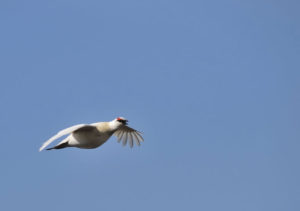Rock Ptarmigan
Rock ptarmigans (pronounced tar-mi-gun) are members of the grouse family inhabiting a vast area around the Arctic pole. They are considered a game bird and hunted by the human population for entertainment and food.
Scientific Classification
| Kingdom | Animalia |
| Phylum | Chordata |
| Class | Aves |
| Order | Galliformes |
| Family | Phasianidae |
| Subfamily | Tetraoninae |
| Genus | Lagopus |
| Scientific Name | Lagopus muta |
Quick Information
| Also Known As | Ptarmigan (Canada and the UK), snow chicken (informal in the US) |
| Description | Size: 13-14 in (36-36 cm) Wingspan: 21-24 in (54-60 cm) Weight: 0.97-1.41 lb (440-640 g) Color: Black area around the eyes, white plumage, and a black tail during winter, molts to dull brown during the summer, with the tail staying black |
| Range of Distribution | Russia, Finland, Scandinavia, Greenland, Canada, Alaska, Japan, Spain, and Switzerland |
| Habitat | Infertile rocky slopes and open tundra in the Arctic and alpine regions; prefers forest edges and thickets during winter |
| Sounds & Communication | Males make an ‘aaaaar-aa-ka-ka-kaa’ sound while females have a quieter ‘kee-aah’ |
| Lifespan | 4 years on average, some individuals have been recorded living up to 13 years of age |
| Diet | Buds of willow and birch, leaves, flowers, seeds and berries of various other plants; juveniles also eat insects |
| Adaptations |
|
| Predators | Birds of prey like golden eagles, crows, ravens, magpies, bald eagles, harriers, pine martens, peregrine falcons, and other carnivores |
| IUCN Conservation Status | Least Concern |
Behavior
Rock ptarmigans seasonally migrate for short distances, flying south to wintering grounds in winter. They make gender specific flocks in winter which disband at the onset of spring. Males become territorial during spring and defend their area vigorously when an intruder shows up.
Mating & Reproduction
Breeding season occurs in spring. Before egg-laying, hens build a nest on the ground in a shallow depression nearby a large rock. She lays between 7 and 10 eggs which are then incubated for around 21 days.
Life-cycle
Hatchlings are born covered in feather and can leave the nest soon after hatching, usually a day. The mother takes care of her chicks, although they can feed themselves. They become capable of flying at the age of 10 days and become independent after 10 to 12 weeks of age. They reach sexual maturity when they are about 6 months old.
Interesting Facts
- Rock ptarmigans are the official bird of Nunavut in Canada. It is also the official game bird of the Newfoundland and Labrador province.
- Unlike other members of the grouse family, some males of this species help the female in raising the chicks.
Published on May 10th 2017 by Sudipto Chakrabarti under Coniferous Forest Animals.
Article was last reviewed on 9th May 2023.


